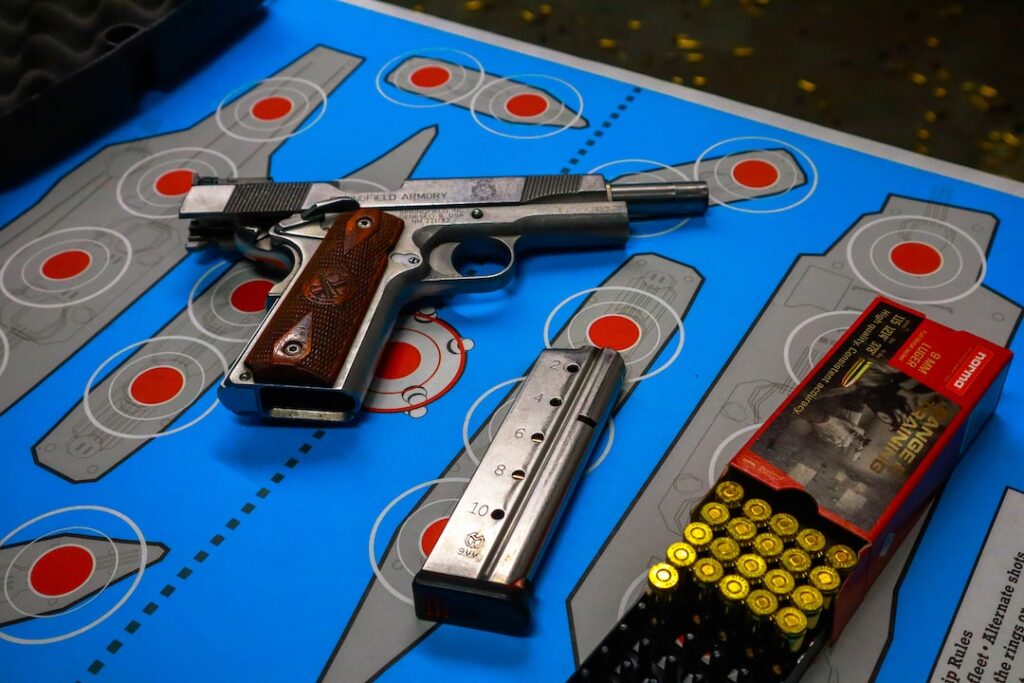A Beginner’s Guide to Shooting a Handgun
If you’re new to shooting a handgun, or if you’re considering it and feeling a little overwhelmed, fear not! Shooting a handgun can be an exciting and empowering experience, and with the right guidance and practice, you’ll be confidently hitting your targets in no time. In this blog post, we’ll cover everything from understanding the basics of handgun operation to safety tips and proper shooting techniques.
What You Need to Know
Interest
Before we dive into the nitty-gritty details, let’s start with some surprising statistics that will pique your curiosity. Did you know that in the United States, there are an estimated 393 million firearms in civilian hands, of which 147 million are handguns? (Source: Small Arms Survey) This staggering number highlights the widespread interest in handgun ownership and shooting sports.
Safety First
Before you even handle a handgun, it’s crucial to understand and prioritize safety. A study by the National Shooting Sports Foundation (NSSF) found that shooting sports have one of the lowest injury rates among traditional sports, attributing this to the emphasis on safety and responsible handling of firearms.
Understanding Handguns: Types and Components
Types of Handguns
There are primarily two types of handguns: revolvers and semi-automatic pistols. Revolvers have a rotating cylinder that holds the cartridges, while semi-automatic pistols use a magazine to feed cartridges into the firing chamber.
Handgun Components
Familiarize yourself with the basic components of a handgun, including the grip, trigger, sights, and safety mechanisms. Understanding how each part contributes to the function of the handgun is essential for safe and effective shooting.
Handgun Safety and Range Etiquette
Safety Rules
Always adhere to the firearm safety rules, commonly known by the acronym ACTS (Assume every firearm is loaded, Control the muzzle direction, Trigger finger must be kept off the trigger, See that the firearm is unloaded) and PROVE (Point the firearm in the safest available direction, Remove all ammunition, Observe the chamber, Verify the feeding path, Examine the bore).
Range Etiquette
When you’re at the shooting range, be mindful of range rules and etiquette. Respect others, be attentive to range officers’ instructions, and always maintain a safe shooting environment for everyone.
Shooting Techniques and Tips
Proper Grip and Stance
Mastering a proper shooting grip and stance is fundamental to improving your accuracy and control. Ensure a firm grip on the handgun, with both hands working together to mitigate recoil.
Sight Alignment and Trigger Control
Achieving proper sight alignment and mastering trigger control are essential for consistent and accurate shooting. Focus on aligning the front and rear sights while smoothly pressing the trigger to the rear without disrupting your sight picture.
How to Apply Handgun Shooting in Your Daily Life
Now that you’re equipped with the basics of shooting a handgun, how can you apply this skill in your daily life?
Self-Defense Preparedness
Proficiency in handgun shooting can contribute to your self-defense preparedness. Seek proper training and guidance to responsibly incorporate a handgun into your personal safety plan, if you choose to do so.
Recreational Shooting
Shooting a handgun can also be a recreational activity that provides stress relief and a sense of accomplishment. Joining shooting clubs or visiting the range with friends and family can turn handgun shooting into an enjoyable pastime.
In Conclusion
In conclusion, shooting a handgun is a skill that requires knowledge, practice, and above all, a commitment to safety. Whether you’re interested in shooting as a sport, for self-defense, or simply for recreational purposes, remember to approach it with respect for the firearm and a dedication to safe and responsible handling. With patience and persistence, you can become a proficient and responsible handgun shooter. So, go ahead, embrace the learning journey, and enjoy the thrill of hitting your mark with confidence!











